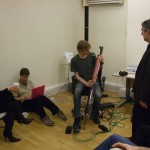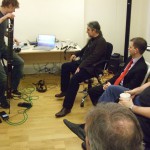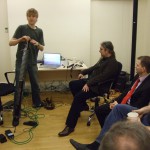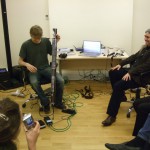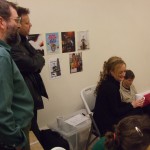Hi everyone,
I just wanted to share an utility I discovered through the forums on macosxaudio.com: CoolBook (http://www.coolbook.se). It allows you to monitor and control the voltage and frequency of the CPU.
I was getting bit frustrated about the power of my 2.33GHz MacBook Pro since I could not get only about 8 voices without crackling from Kontakt with 128 samples latency at 44.1KHz.
Using CoolBook, I fixed my frequency at 2.33GHz without letting speedstep decide when to increase. All of a sudden I now get 24 voices out of Kontakt with 64 samples latency at 44.1KHz. I might even get more voices, but I didn’t have time to try to push it harder.
I was considering getting a new MacBook Pro for live performance, but it seems I’ll now be able to get some more years of life out of my current laptop 🙂
Take care,
Geert
Hi everyone,
I wanted to share a utility I discovered a few months ago through the forums on macosxaudio.com: CoolBook. It allows you to monitor and control the voltage and frequency of your computer’s CPU.
I discovered it when I was getting frustrated about the computing power of my previous MacBook Pro (2.33GHz) since I could only about 8 voices without crackling from Kontakt with 128 samples latency at 44.1KHz. At the time, this put quite a hamper on using virtual instruments for live performing and I was very hesitant on using my midi guitar on stage.
Using CoolBook, I fine-tuned the frequencies of the CPUs of my MacBook Pro, selecting faster ones for the lower voltage levels, narrowing the gap between the lowest and highest speeds. All of a sudden I got 24 voices out of Kontakt with 64 samples latency at 44.1KHz.
The reason for this is that the speedstep technology in Intel CPUs dynamically changes the speed of your processor based on how hard it has to work. However, since current CPUs have several cores, this only kicks in when all the cores are actually being stressed. Most audio applications and plugins nowadays still only use one core, so this reduced my 2.33GHz MacBook Pro to a 1Ghz computer when using it for music!
Since Eigenharps, and especially the Pico, rely on the processing power of your computer, CoolBook is probably a good thing to look into. Compare the following two screenshots, the first one shows the default settings on my current 3.06GHz MacBook Pro, while the second one shows the optimal frequency/voltage pairs that I found for its CPU.


You can clearly see that for less power consumption I get more than 1GHz of performance increase when the CPU is in its slowest speed. When running at top speed, the power consumption is much less and I have only three steps to step through to get from slowest to faster. Besides the performance improvements at the slowest speeds, you thus also get more battery life out of your laptop and it runs cooler!
BEWARE though, you need to carefully read CoolBook’s manual as discovering the optimal frequency/voltage pairs for your computer will require you to go too far and cause intentional instabilities, so that you can back off a bit later. There is no danger of damaging your CPU though (as opposed to over clocking) since you’re simple running less power through it, instead of more.
Hope this helps you to get better performance out of your current system.
Take care,
Geert














